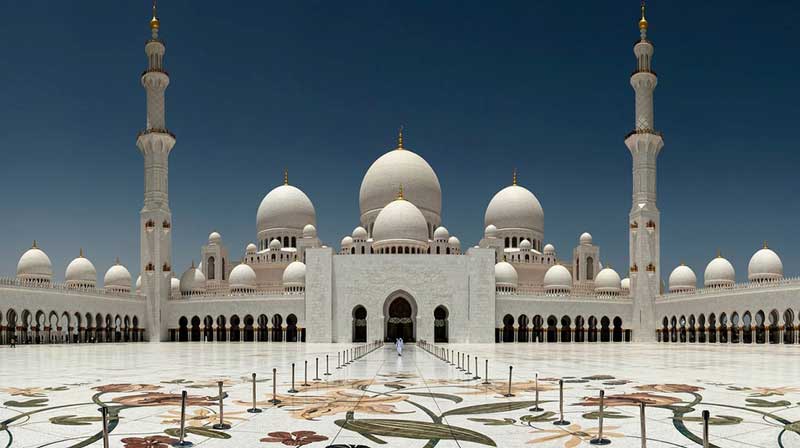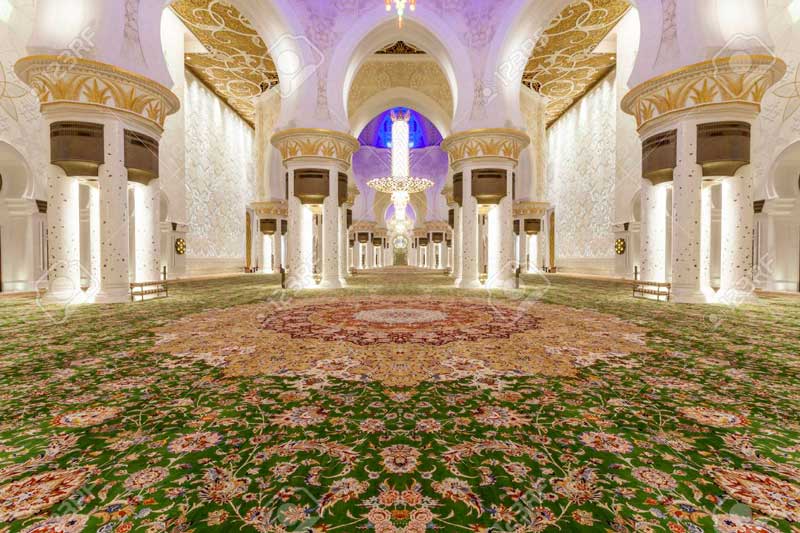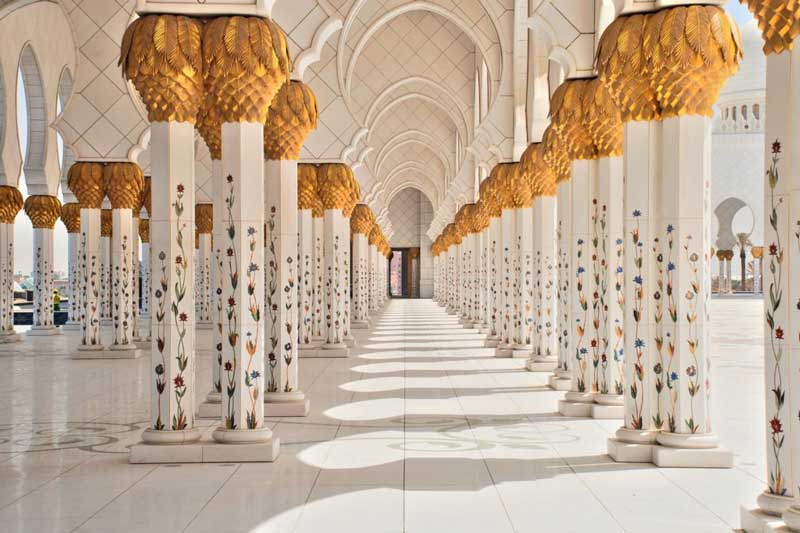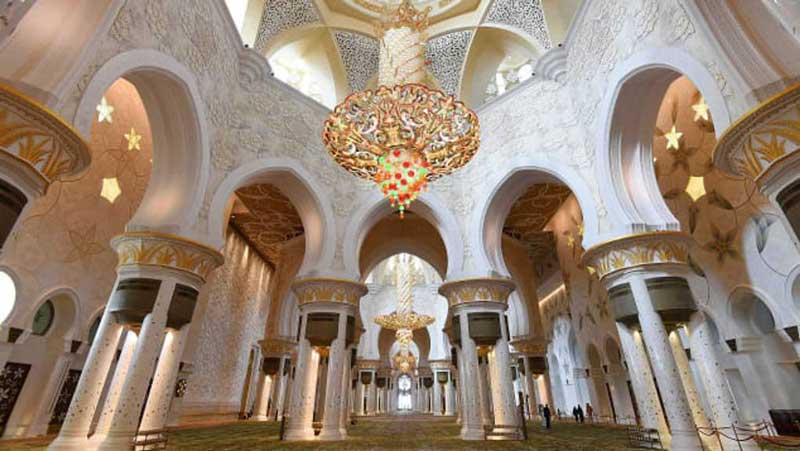
Abu Dhabi, the capital city of the United Arab Emirates, has around 1500 places of worship for Islamic devotees. However, Sheikh Zayed Grand Mosque stands out among all of them in its jaw-dropping beauty with marble walls, 82 domes, 1096 exterior columns, 96 semi-precious jewel-encrusted internal columns, and seven 24-carat-gold-gilded crystal chandeliers. Apart from being the largest and most ornate place of worship, it is also one of the star attractions of the city as a massive architectural work of art that intentionally blends different Islamic architectural schools.
While the building complex covers a vast area of 12 hectares, excluding the exterior landscaping and car parking lots, the main axis of the building is rotated about 11° south of the true west, aligning in the direction Kaaba, in Mecca.

The Sheikh Zayed Grand Mosque was named after Sheikh Zayed bin Sultan Al Nahyan, the first president and the ruler of Abu Dhabi, who conceived the idea of constructing a structure that would unite the cultural diversity of the Islamic world as a symbol of peace, tolerance, and diversity. He took the initiative and personal interest to start his dream project in 1996 and intended to be buried in the courtyard of the proposed mosque. Construction of the Grand Mosque was completed in 2007, and as he wished, Sheikh Zayed was buried in its courtyard, when he died in 2004, before the completion of the mosque.

Designed by the Syrian architect Yousef Abdelky, the building of the Grand Mosque reflects a wonderful fusion of Persian, Mughal, and Moorish architecture. While the floor plan and the layout of its dome reflect the influence of the Badshahi Mosque in Lahore, its archways clearly indicate the Moorish influence, and the minarets are classical examples of traditional Arab. The best qualities of natural materials like marble, semi-precious stones, crystals, and ceramics were procured from all over the world, and more than 3000 artisans from 38 global sub-contracting companies were conscripted in the construction of the massive building.
When completed, the magnificent mosque became an artistic masterpiece and symphony of colours and shades, created with the colours of the walls and columns, harmonized with the colourful hand-knotted carpet with intricate Islamic design, created by the carpet maker and artist Dr. Ali Khaliqi.

The Sheikh Zayed Grand Mosque is big enough to accommodate around 40,000 worshippers at a time. While the main prayer hall has the capacity to accommodate more than 7000, the other two smaller prayer halls, one reserved for the ladies, have the capacity of 1,500 each. The four minarets of the mosque are about 348 feet (106 m) tall, and all of them have three completely different geometric shapes, created with the combination of the Mameluke, Ottoman, and Fatimid styles.
While the first shape, the square-shaped base, reflects the Moroccan, Andalusian, and Mameluke styles, the octagonal-shaped second section goes back to the Mameluke era of the 13th to 16th centuries, and the cylindrical-shaped third section is from the Ottoman era of the 14th to 20th centuries. As if that was sufficient, the crowning lantern covered with gold-glass mosaic goes back to the Fatimid era of the 10th to12th centuries. Unlike other famous mosques, the Grand Mosque has an overall 82 white marble-clad onion-shaped domes varying in size, crowned with crescent-shaped finials decorated with gold-glass mosaic. The largest of the domes is located atop the centre of the main prayer hall.

The walls of the Sheikh Zayed Grand Mosque were built of marble from Macedonia, where white was the prominent colour, chosen by Sheikh Zayed as a symbol of peace and purity. The marble walls are appropriately complemented with coloured stones, creating colourful flowery designs all over the mosques. From the columns to the walls of the entrance, every inch is decorated with intricate designs of flowers, creating a pop of colour to the beautiful white walls. The marble-clad 96 columns in the main prayer hall are inlaid with mother of pearl. The main prayer hall is itself a work of art, exquisitely decorated from the walls to the ceiling, and the windows below the domes allow natural light to lit the prayer halls. The pulpit or the minbar where the Imam stands while conducting the prayer is decorated with the 99 names of Allah in Arabic.

Seven impressive crystal chandeliers, manufactured by Faustig of Munich in Germany, added to the decoration of the Grand Mosque. The largest among them, 49 feet (15 m) tall, 33 feet (10 m) across, and weighing around 12 tones is located in the main prayer hall, along with the two smaller chandeliers, weighing 8 tons each. Four blue chandeliers of the smaller version are located in the foyer entrances surrounding the mosque. Apart from that, the mosque is equipped with 22 light towers for outdoor illumination after sunset. The pools along the arcades reflecting the illuminated columns of the mosque at night create a heavenly soothing effect of peaceful serenity